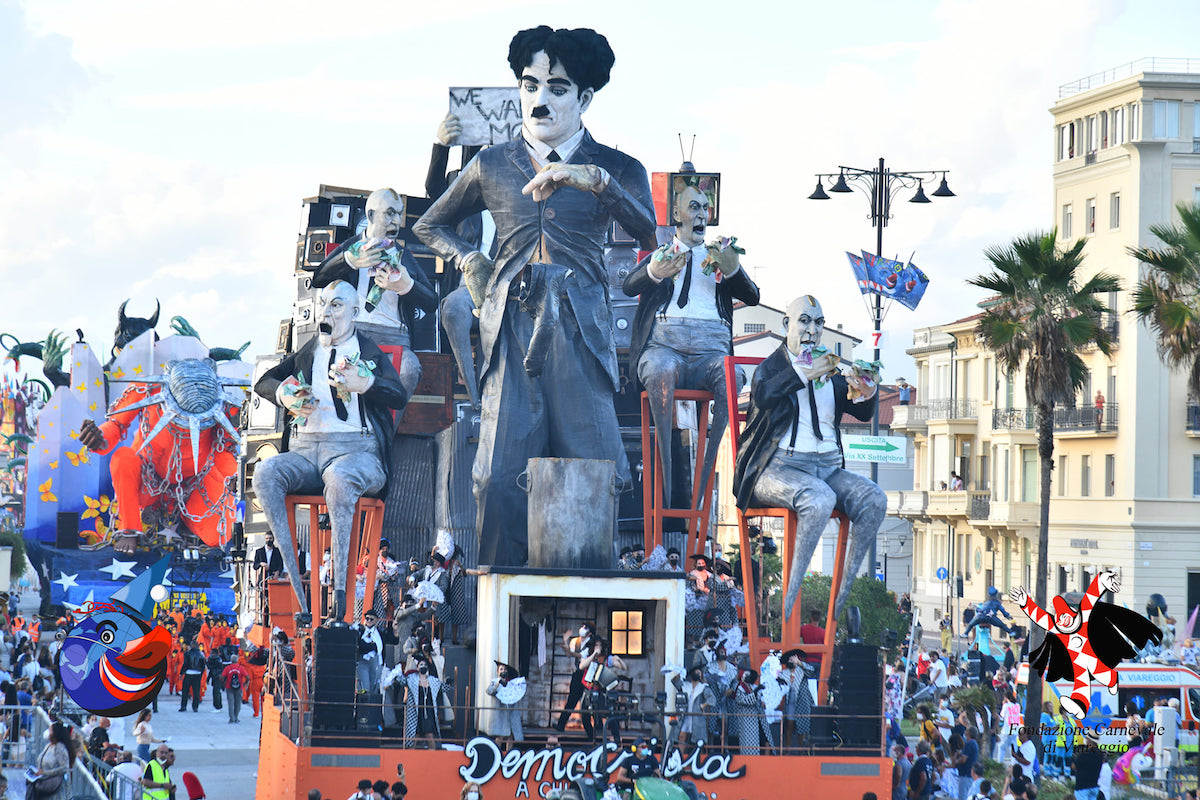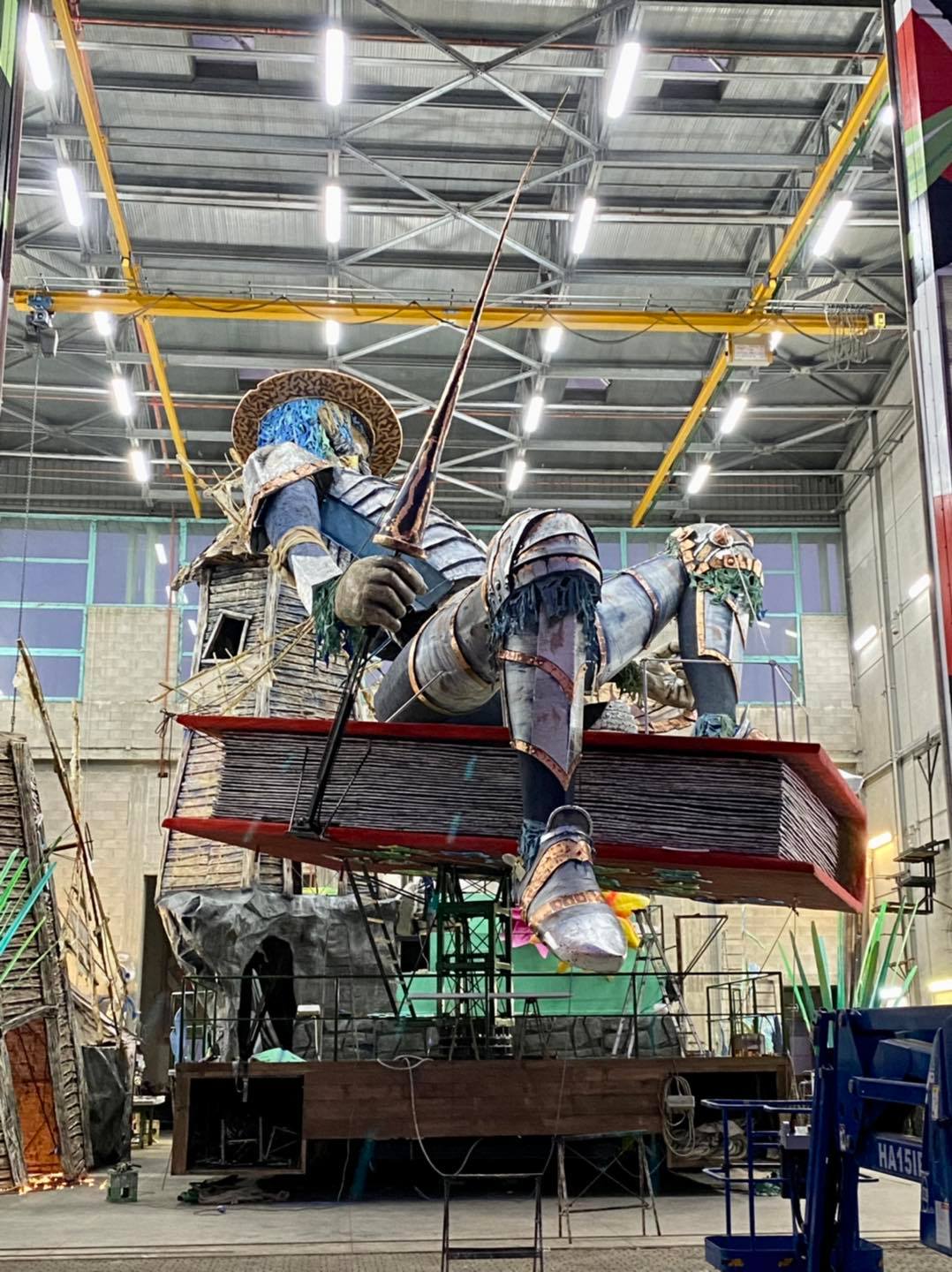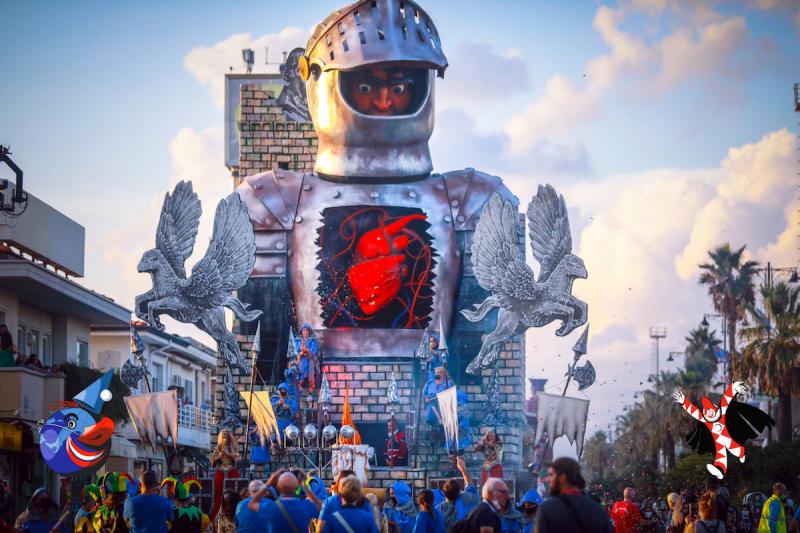Italy’s Viareggio Carnival is often described as the most irreverent of all Italian Carnival celebrations. This is due to the fact that its main peculiarity is the parade of giant allegorical floats - papier-mâché works of art that can be up to 20 meters high - mocking politicians and celebrities.
The Viareggio Carnival is possibly the most famous in Italy after the Venice Carnival, a major month-long event attracting a national and international crowd with street parties day and night, parades of floats, masquerade balls and festivities of all kinds.
Let’s look at its history and how the floats are made.
Where is Viareggio?
Viareggio is a seaside town on the north-western coast of Tuscany, in the area known as Versilia. It is part of the province of Lucca and is approximately an hour and 20 minute drive from Florence. The town has an important shipbuilding industry and is a popular summer resort.
When and how did the Viareggio Carnival originate and develop?

The first parade of festively decorated carriages took place in 1873 on Viareggio’s historic Via Regia, in the heart of the old city. The idea of a parade to celebrate Carnival came from a group of young men from Viareggio’s wealthy families who used to congregate at the local Casino café. It was February and a parade was planned for Shrove Tuesday. The Viareggio Carnival as we know it today developed from that first parade.
At the end of the 20th century, the first triumphal floats began to appear. They were made of wood, scagliola and jute, modeled by local sculptors and put together by carpenters and blacksmiths who worked in the shipyards.
Later, at the beginning of the 20th century, the parade was transferred to the Promenade by the sea, providing a spectacular backdrop to an increasingly spectacular show.
In 1925, the painter and builder from Viareggio Antonio D'Arliano perfected the papier-mâché technique, which made it possible to create ever larger floats increasingly daring in terms of scenography and handling because the material is extremely light.
In 1931, the Carnival’s official painter Uberto Bonetti the festival’s most famous mask, Burlamacco, a clown whose clothes are a mosaic of those from the classic characters of the Italian Commedia dell’Arte, an early form of theater.
The Carnival of Viareggio has become so successful that in 2001, a ‘Carnival Citadel’ was inaugurated: 16 hangar-workshops overlooking a gigantic elliptical square (used for outdoor performances in summer), where float artisans turn their creative ideas into gigantic floats. The Citadel also features a Carnival Museum and a papier-mâché school.
The allegorical floats: real works of art

The allegorical floats, which are the largest in the world, parade along the seaside promenade of Viareggio, entertaining viewers with their spectacular movements and engaging choreographies. Through satire, many of the floats address contemporary issues, from national and international politics to the environment to social matters.
Figures included Commedia dell’Arte characters such as Arlecchino and Pierrot, knights, haunted castles, singers and actors, popes and politicians, with former Italy’s prime minister Silvio Berlusconi a favorite subject in past editions.
The raw material of the Viareggio Carnival floats is papier-mâché. To make the floats, tons of newspaper sheets are used, mixed with the simplest and most natural glue: water and flour. Thanks to papier-mâché, Viareggio builders can create some sort of ‘traveling theaters’ that are more than 20 meters high and 12 meters wide, with incredible choreographic effects.
The artists behind Viareggio’s festive papier-mâché machines are local men who often pass down their skills and secrets of a craft like no other in the world to their sons. There are 25 local firms devoted to the creation of carnival floats, employing a large number of people.
Every year, at the end of the show, a jury selects the winners.
Carnival in Italy
Carnival is traditionally celebrated in Catholic countries. In Italy, between the end of January and the beginning of March, cities across the country are invaded by masks, costumes, confetti, colorful parades, and a playful attitude.
The origins of Carnival date back to the Roman Saturnalia, which were celebrated in honor of the new year. However, the etymology of the word "carnival" is likely derived from the Latin "carnem levare," meaning "eliminate meat": the expression indicated the banquet held on the last day before the period of fasting and abstinence from meat of the Christian Lent began. Indeed, in the Catholic liturgical calendar, Carnival is placed between the Epiphany (January 6) and Lent.
Carnival celebrations reach their peak on Giovedì Grasso (Shrove Thursday) and Martedì Grasso (Shrove Tuesday), the last Thursday and Tuesday before Lent. Fat Tuesday marks the end of Carnival, as Lent begins with Ash Wednesday.
Viareggio Carnival in 2022
Viareggio’s amazing floats are scheduled to parade on the following dates:
Sunday 20 February
Thursday 24 February
Sunday 27 February
Tuesday 1 March
Saturday 5 March
Saturday 12 March














